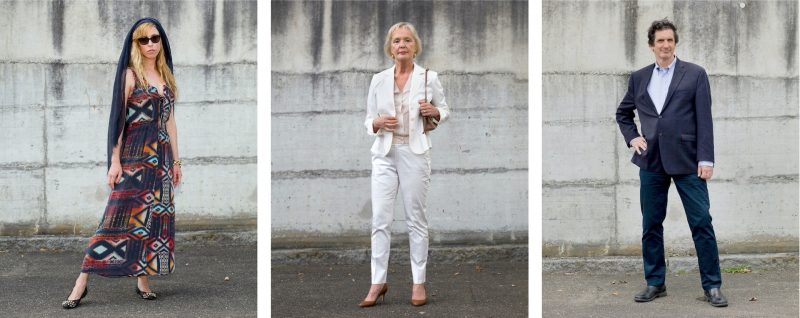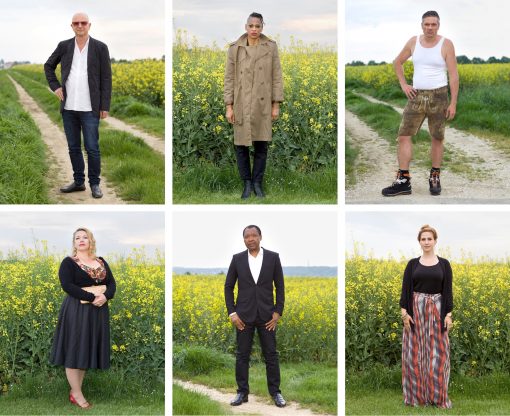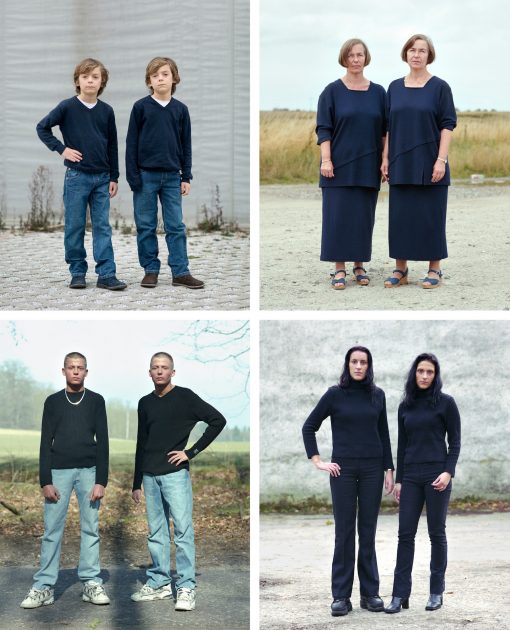Albrecht Tübke
Portraits
5/28/2016 — 8/20/2016

5/28/2016 — 8/20/2016
An exhibition of portraits by German photographer Albrecht Tübke temporarily complements the exhibition The Order of Things: Photography from The Walther Collection, curated by Brian Wallis. The exhibition focuses on the "Ulm Portraits," a series of images taken in 2010, 2011 and 2015 during the exhibition openings at The Walther Collection in Neu-Ulm, when Tübke photographed the guests at these events. A selection of pictures from all three years will be presented in the Black House, expanding the themes of portraiture and identity—which is very broadly conceived in The Order of Things—by including the aspect of self-perception and self-representation of the opening audience.
In his photographs, Tübke reverses the familiar relationship between viewer and object, alternatively turning the museum visitor into a model. Comparable to August Sander's well-known series of portraits "Antlitz der Zeit" (Face of Our Time), also on view in The Order of Things, Tübke introduces various types of opening guests: neighboring villagers, relatives and family of the collector, prominent figures of the Ulm cultural scene, and guests from the international art world. The significance that fashion and style play among such heterogeneous individuals is captured by Tübke just as soberly as the different poses of the people who move between extroverted self-expression and insecurity. In his photographs, Tübke examines questions of identity, individuality and the role of the individual within society. He uses photography as a means of documentation to capture a multi-faceted image of his fellow human beings in a distant yet sensitive manner.
In addition to the "Ulm Portraits," The Walther Collection presents three additional series from Tübke's work in the upper floor of the White Cube. "Dalliendorf," one of the photographer's earliest portrait series, is based on biographical experiences. Tübke chose the eponymous village in Mecklenburg-Vorpommern as his photographic subject while still a student. Having spent part of his childhood and youth there, he found Dalliendorf almost unchanged during a visit in the mid-1990s. The pictures unite the photographer's subjective, memory-led view with the status quo he encountered. The concept of "Dalliendorf" is broader than that of most of Tübke's later series. He not only photographed the villagers, but also the interiors and landscapes in order to comprehensively depict the peculiarities of the village.
The "Dalliendorf" portraits possess the elements of Tübke's trademark imagery: they show the persons photographed in sober full-body shots against relatively homogeneous backgrounds, with a direct view into the camera. Clothing and poses have identity-forming functions, conveying personality and individuality. The exclusive use of natural daylight results in soft, subdued colors that underscore Tübke's documentary approach.
All these qualities characterize the series "Twins" and "Caves," which differ only in the choice of motif. As the title denotes, "Twins" shows pairs of identical twins of different gender and age, while "Caves" portray the employees in a marble quarry in Carrara. Similar to "Dalliendorf," "Caves" does not limit itself solely to portraiture, but also documents the site and work utensils found in the quarry.
Born in Leipzig, Albrecht Tübke studied at the Academy of Visual Arts in Leipzig, where he completed his artistic training as a master student of Timm Rautert. Subsequently, Tübke received his MA at Guildhall University in London in 2000. His projects oscillate between adaptation and demarcation, examining the representations of the human being, and the role of the individual within society. Among his most famous projects are the portrait series "Dalliendorf" from 1996 and "Citizens" from 2001.



